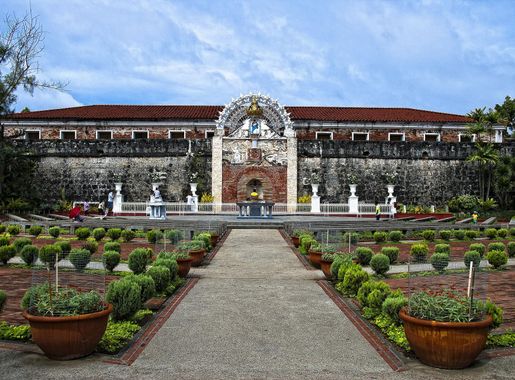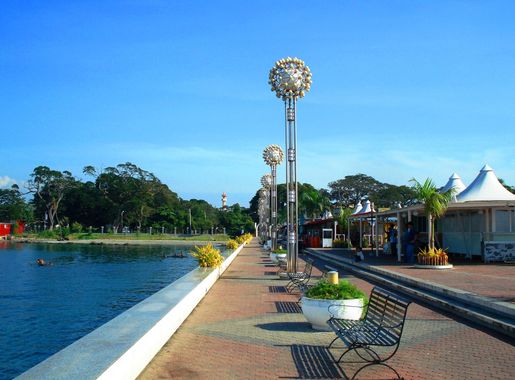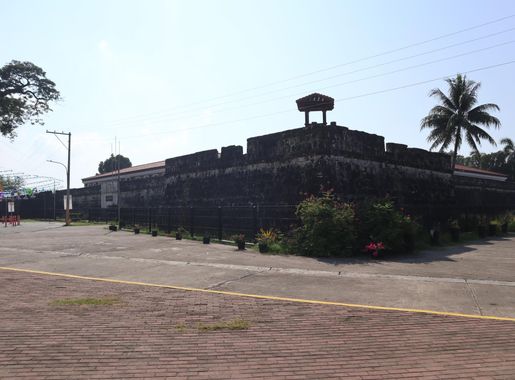
Fort Pilar: The Historic Heartbeat of Zamboanga City
Explore Fort Pilar in Zamboanga City: A historic fortress blending colonial history, spiritual reverence, and cultural treasures for an enriching travel experience.
Fort Pilar, or Real Fuerza de Nuestra Señora del Pilar de Zaragoza, is a cultural and historical gem located in Zamboanga City, Philippines. This 17th-century military defense fortress was built by the Spanish to protect the city from pirate attacks and has since become a symbol of Zamboanga's rich heritage. The fort's well-preserved walls and bastions offer a glimpse into the colonial past, making it a must-visit for history enthusiasts. Today, Fort Pilar is more than just a historical site; it serves as a beacon of faith and reverence. The fort houses a revered Marian shrine dedicated to Our Lady of the Pillar, the city's patroness. Locals and tourists alike visit the shrine to offer prayers and light candles, adding a spiritual dimension to your visit. The open-air chapel attached to the fort is a serene spot where one can reflect amidst the backdrop of ancient stone walls and lush gardens. Adjacent to the fort is the National Museum of Zamboanga, where you can explore a fascinating collection of artifacts, artworks, and exhibits that narrate the rich tapestry of the region's history and culture. As you stroll through the museum, you'll find yourself immersed in stories of the past, from pre-colonial times to the present day. Fort Pilar is not just a landmark; it's a living testament to the resilience and spirit of the people of Zamboanga.
Local tips in Fort Pilar
- Visit early in the morning to avoid crowds and enjoy a peaceful experience.
- Don't miss the evening light and sound show that narrates the history of Fort Pilar.
- Wear comfortable shoes as you'll be doing a fair amount of walking.
- Respect the local customs, especially when visiting the Marian shrine.
- Bring a camera; the views and architecture are perfect for photography.
Fort Pilar: The Historic Heartbeat of Zamboanga City
Fort Pilar, or Real Fuerza de Nuestra Señora del Pilar de Zaragoza, is a cultural and historical gem located in Zamboanga City, Philippines. This 17th-century military defense fortress was built by the Spanish to protect the city from pirate attacks and has since become a symbol of Zamboanga's rich heritage. The fort's well-preserved walls and bastions offer a glimpse into the colonial past, making it a must-visit for history enthusiasts. Today, Fort Pilar is more than just a historical site; it serves as a beacon of faith and reverence. The fort houses a revered Marian shrine dedicated to Our Lady of the Pillar, the city's patroness. Locals and tourists alike visit the shrine to offer prayers and light candles, adding a spiritual dimension to your visit. The open-air chapel attached to the fort is a serene spot where one can reflect amidst the backdrop of ancient stone walls and lush gardens. Adjacent to the fort is the National Museum of Zamboanga, where you can explore a fascinating collection of artifacts, artworks, and exhibits that narrate the rich tapestry of the region's history and culture. As you stroll through the museum, you'll find yourself immersed in stories of the past, from pre-colonial times to the present day. Fort Pilar is not just a landmark; it's a living testament to the resilience and spirit of the people of Zamboanga.
Iconic landmarks you can’t miss
Fort Pilar Shrine
Discover the serene beauty and historical significance of Fort Pilar Shrine in Zamboanga City, a must-visit for culture and history enthusiasts.
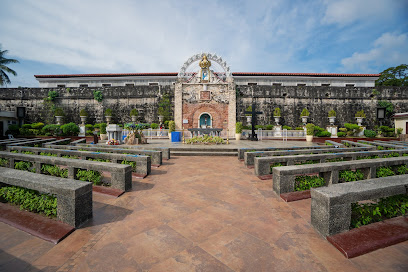
National Museum Western-Southern Mindanao Regional Museum (Zamboanga)
Explore the National Museum of Western-Southern Mindanao: A Journey Through Zamboanga's Cultural and Historical Legacy.
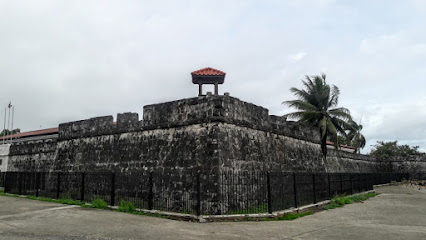
Fort Pilar Parking Lot
Discover the convenience of Fort Pilar Parking Lot, a strategic hub for exploring Zamboanga's rich history, culture, and stunning coastal beauty.

Shrine of Our Lady of the Pilar
Experience tranquility and spiritual connection at the Shrine of Our Lady of the Pilar in Zamboanga City, a beautiful testament to faith and culture.
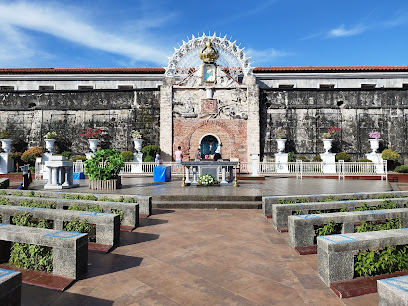
Plaza Pilar
Discover the tranquility and charm of Plaza Pilar, a city park in Zamboanga that invites relaxation and cultural exploration.
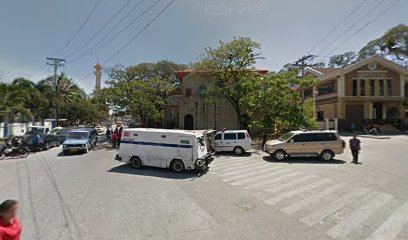
Unmissable attractions to see
Plaza Pershing
Explore the lush beauty and cultural heart of Zamboanga at Plaza Pershing, a must-visit urban park for every traveler.
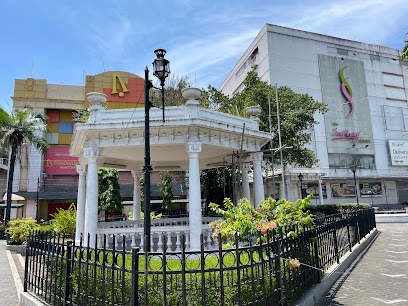
Abong-abong Park
Experience tranquility and natural beauty at Abong-abong Park in Zamboanga, a perfect destination for relaxation and family adventures.
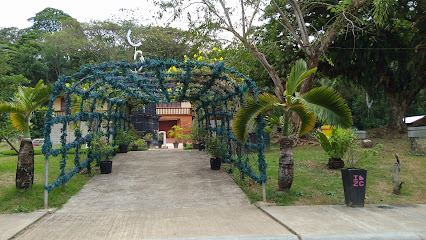
Rizal Park
Discover the beauty of Rizal Park in Zamboanga, a tranquil escape featuring lush gardens and a tribute to the Philippines' national hero.
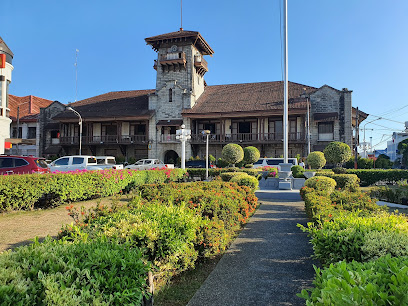
ZSCMST Bird Sanctuary
Experience the tranquility and beauty of birdlife at ZSCMST Bird Sanctuary, Zamboanga's hidden gem for nature lovers and birdwatchers.
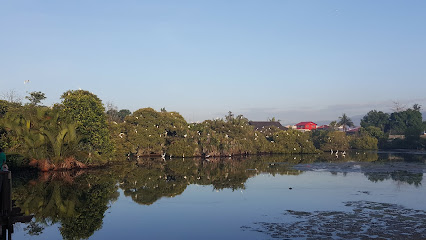
RT LIM BOULEVARD VIEWING DECK
Experience unparalleled views of Zamboanga at the RT Lim Boulevard Viewing Deck, a scenic destination for tourists and photography enthusiasts.
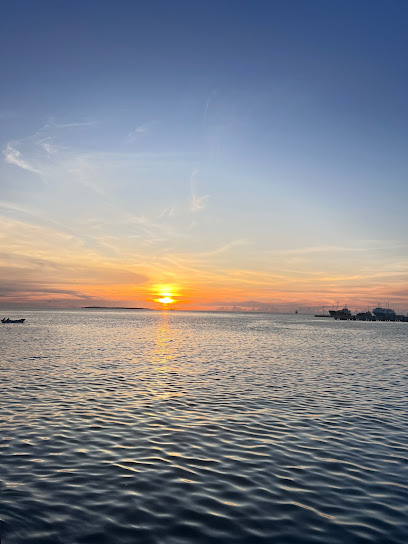
Plaza Pilar
Discover the serene beauty of Plaza Pilar, a city park in Zamboanga, where history meets tranquility amidst lush landscapes.
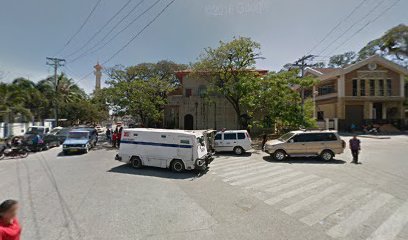
Essential places to dine
Jimmy's Satti Haus
Experience authentic Zamboanga cuisine at Jimmy's Satti Haus, where family-friendly dining meets delicious local flavors.
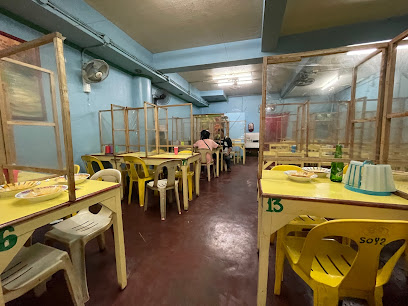
Alavar Seafood Restaurant
Experience the best of Zamboanga's seafood at Alavar Seafood Restaurant, where freshness meets flavor in every dish.
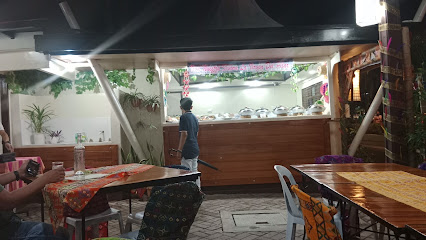
Barcode-Paseo del Mar
Experience exquisite seafood dining at Barcode-Paseo del Mar in Zamboanga – where local flavors meet stunning coastal views.
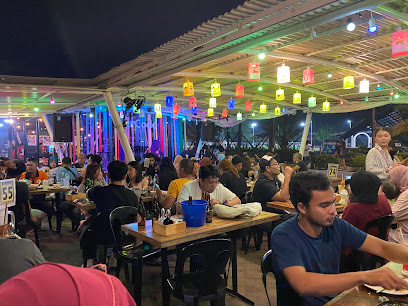
Bistro Escondido
Discover the authentic taste of Zamboanga at Bistro Escondido - where barbecue meets local flavor in a cozy setting.
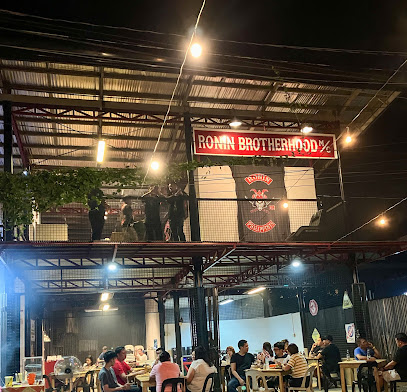
Mamang’s Greasy Spoon
Discover authentic Filipino cuisine at Mamang's Greasy Spoon in Zamboanga – where every bite tells a story.
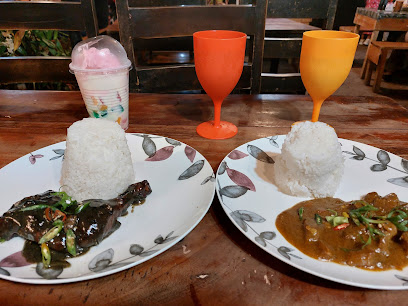
Pinokyo's
Discover authentic Filipino cuisine with a twist at Pinokyo's in Zamboanga – where every meal tells a story.
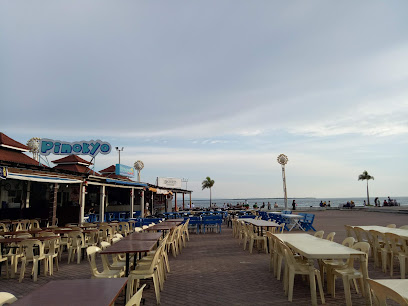
Lola's Chicharon
Discover authentic Filipino cuisine at Lola's Chicharon in Zamboanga—home to delicious crispy pork cracklings and traditional dishes.

STK Restaurant
Discover authentic Asian cuisine at STK Restaurant in Zamboanga - where flavors come alive in every dish.
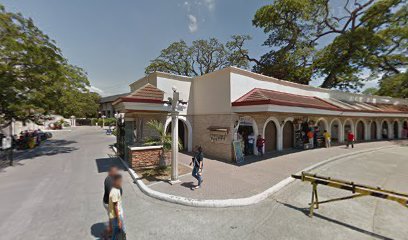
Kisma Restaurant
Experience the rich tapestry of Filipino cuisine at Kisma Restaurant in Zamboanga—where every dish tells a story.
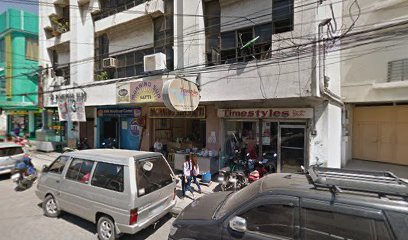
ASY chicken barbeque unli rice
Savor unlimited chicken barbeque and rice at ASY Chicken Barbeque in Zamboanga - A true taste of Filipino culinary tradition.
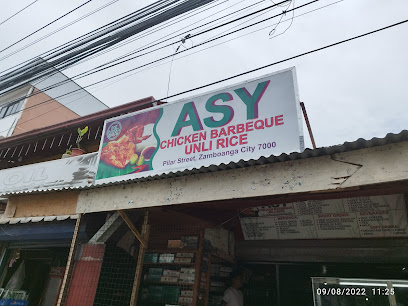
Markets, malls and hidden boutiques
KCC Mall De Zamboanga
Discover diverse shopping, delightful dining, and vibrant entertainment at KCC Mall De Zamboanga, the ultimate retail destination in Zamboanga City.

Canelar Barter Trade
Explore Canelar Barter Trade in Zamboanga for unique handicrafts, local artisan goods, and an authentic Filipino shopping experience.
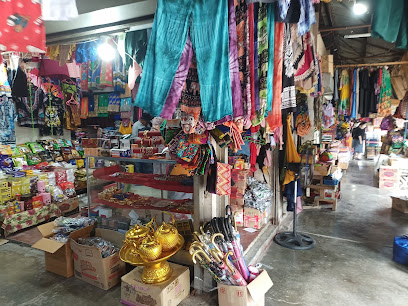
Zamboanga City L M Enterprises
Experience the heart of Zamboanga through its local gems at L M Enterprises, where culture and community meet in a delightful shopping adventure.
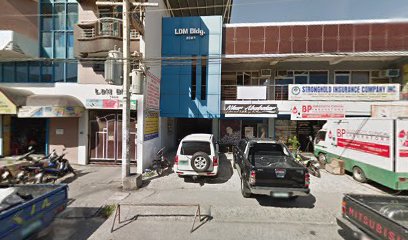
Alians' Boutique And Dress SHOP
Discover exquisite fashion and personalized dressmaking at Alians' Boutique And Dress SHOP in Zamboanga, where style meets craftsmanship.

Fernandez Store
Explore local craftsmanship and unique home goods at Fernandez Store in Zamboanga, a treasure trove for every traveler.
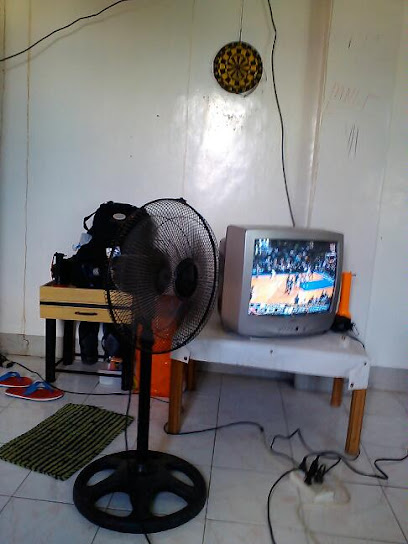
Ariana store - snacks house
Discover the unique offerings of Ariana Store, a police supply store in Zamboanga, blending local culture and snacks for every traveler.
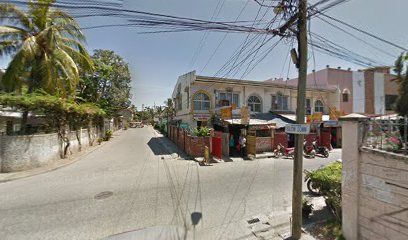
Zamboanga Native Products
Discover authentic Zamboangueño craftsmanship with unique souvenirs at Zamboanga Native Products, your gateway to local culture.

Meng's Store
Explore Meng's Store in Zamboanga for authentic religious goods and cultural treasures, reflecting the rich spirituality of the region.
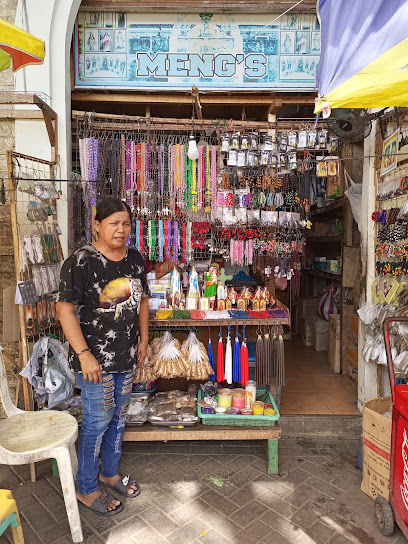
Hiluck Trading
Explore Hiluck Trading in Zamboanga for unique gifts, local crafts, and authentic souvenirs capturing the essence of Philippine culture.
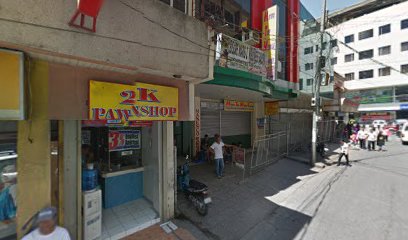
3 Sisters Ukay-Ukay
Explore sustainable fashion at 3 Sisters Ukay-Ukay in Zamboanga, where every piece tells a story and thrift shopping meets style.
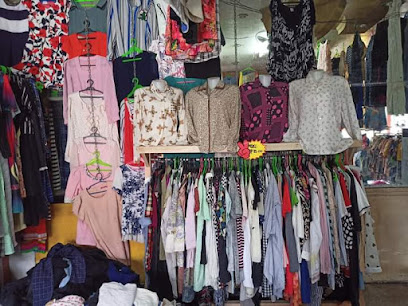
Essential bars & hidden hideouts
Hype
Discover Hype, Zamboanga's hottest bar, where vibrant nightlife meets exceptional drinks and unforgettable experiences.
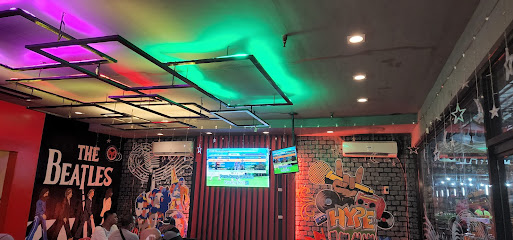
History Karaoke Bar and Cocktail Lounge
Discover the joy of karaoke and cocktails at Zamboanga's vibrant History Karaoke Bar and Cocktail Lounge, where every night is a celebration.
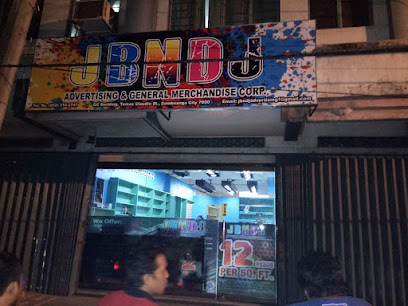
Shisha Dine & Bar
Discover the vibrant flavors and relaxing atmosphere of Shisha Dine & Bar in the heart of Zamboanga, a perfect spot for food and shisha lovers.
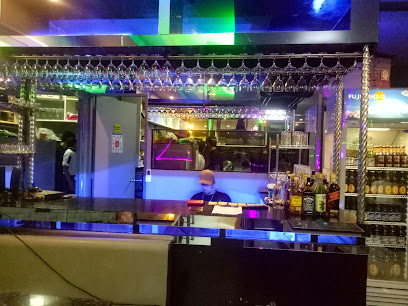
First Class
Discover the vibrant nightlife at First Class, Zamboanga’s premier bar, where excellent drinks and lively ambiance await every visitor.
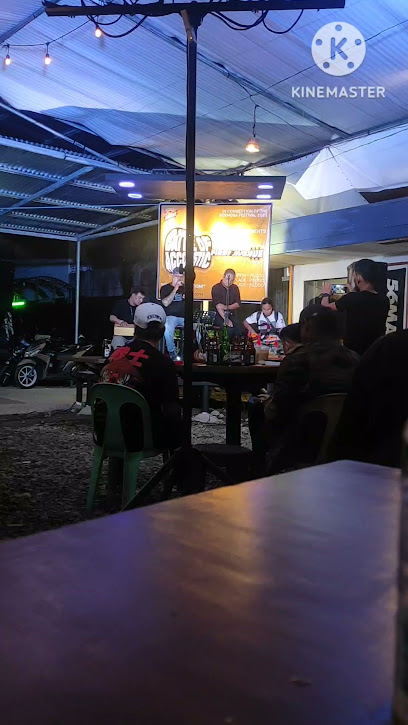
LA TABERNA
Discover the heart of Zamboanga's nightlife at La Taberna, a vibrant bar offering local flavors, live music, and a warm, welcoming atmosphere.
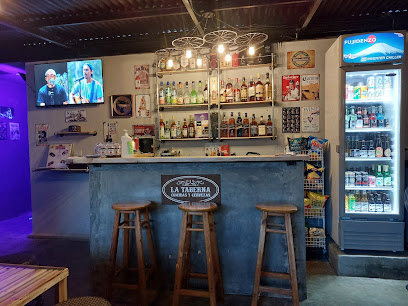
Cowboys bar
Discover the vibrant nightlife of Zamboanga at Cowboys Bar, a lively venue for drinks, music, and socializing with locals and travelers.

Sanctuary Resto Bar
Experience the vibrant flavors and lively atmosphere at Sanctuary Resto Bar in Zamboanga, where every meal is a celebration of local cuisine.
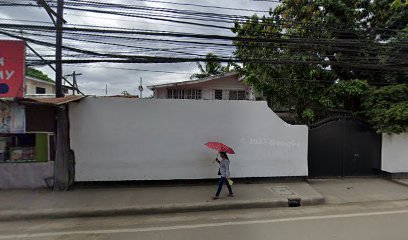
NectarHydrationStationZC
Experience the vibrant atmosphere and refreshing drinks at Nectar Hydration Station, the must-visit bar in Zamboanga, Philippines.

Rustic Shots
Experience the vibrant nightlife of Zamboanga at Rustic Shots, where great drinks and a welcoming atmosphere await every visitor.

Duh Bar
Discover the vibrant nightlife at Duh Bar, the premier cocktail destination in Zamboanga, offering unique drinks and a lively atmosphere.
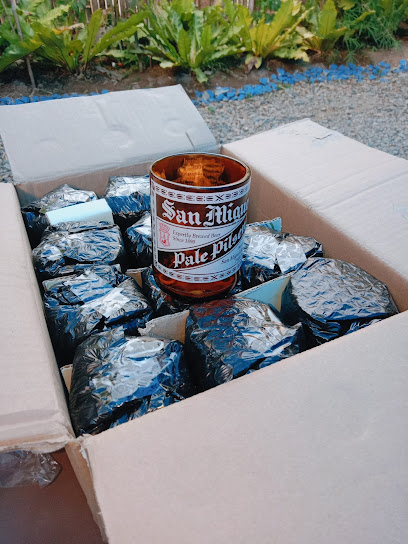
Local Phrases
-
- HelloKumusta
[koo-moo-sta] - GoodbyePaalam
[pa-a-lam] - YesOo
[oh-oh] - NoHindi
[hin-dee] - Please/You're welcomeMangyari po
[man-gya-ree po] - Thank youSalamat
[sa-la-mat] - Excuse me/SorryPasensya na
[pa-sen-sya na] - How are you?Kamusta ka?
[ka-moo-sta ka?] - Fine. And you?Mabuti. Ikaw?
[ma-boo-tee. ee-kaw?] - Do you speak English?Marunong ka mag-Ingles?
[ma-roo-nong ka mag-ing-gles?] - I don't understandHindi ko maintindihan
[hin-dee ko main-tin-di-han]
- HelloKumusta
-
- I'd like to see the menu, pleasePakitingnan ko po ang menu
[pa-ki-ting-nan ko po ang me-nu] - I don't eat meatHindi ako kumakain ng karne
[hin-dee a-ko ku-ma-ka-in ng kar-ne] - Cheers!Tagay!
[ta-gai!] - I would like to pay, pleaseGusto ko pong magbayad
[gus-to ko pong mag-ba-ya-ad]
- I'd like to see the menu, pleasePakitingnan ko po ang menu
-
- Help!Tulong!
[tu-long!] - Go away!Lumayo ka!
[lu-ma-yo ka!] - Call the Police!Tawag sa Pulis!
[ta-wag sa pu-lis!] - Call a doctor!Tawag sa doktor!
[ta-wag sa dok-tor!] - I'm lostNawawala ako
[na-wa-wa-la a-ko] - I'm illMay sakit ako
[may sa-kit a-ko]
- Help!Tulong!
-
- I'd like to buy...Gusto ko bumili ng...
[gus-to ko bu-mi-li ng...] - I'm just lookingNagmamasid lang ako
[nag-ma-ma-sid lang a-ko] - How much is it?Magkano ito?
[mag-ka-no i-to?] - That's too expensiveMasyadong mahal 'yan
[ma-sya-dong ma-hal ya-an] - Can you lower the price?Pwede bang babaan ang presyo?
[pu-we-de bang ba-ba-an ang pres-yo?]
- I'd like to buy...Gusto ko bumili ng...
-
- What time is it?Anong oras na?
[a-nong o-ras na?] - It's one o'clockAlas-uno na
[a-las-oo-no na] - Half past (10)Kalahating (sampu)
[ka-la-ha-ting (sam-poo)] - MorningUmaga
[u-ma-ga] - AfternoonHapon
[ha-pon] - EveningGabi
[ga-bi] - YesterdayKahapon
[ka-ha-pon] - TodayNgayon
[nga-yon] - TomorrowBukas
[bu-kas] - 1Isa
[i-sa] - 2Dalawa
[da-la-wa] - 3Tatlo
[tat-lo] - 4Apat
[a-pat] - 5Lima
[li-ma] - 6Anim
[a-nim] - 7Pito
[pi-to] - 8Walo
[wa-lo] - 9Siyam
[si-yam] - 10Sampu
[sam-poo]
- What time is it?Anong oras na?
-
- Where's a/the...?Nasaan ang...?
[na-saan ang...?] - What's the address?Ano po ang address?
[a-no po ang ad-dres?] - Can you show me (on the map)?Pwede mo akong ipakita (sa mapa)?
[pu-we-de mo a-kong ipa-ki-ta (sa ma-pa)?] - When's the next (bus)?Kailan ang susunod na (bus)?
[ka-i-lan ang su-su-nod na (bus)?] - A ticket (to ....)Isang tiket (papuntang ...)
[i-sang ti-ket (pa-pun-tang ...)]
- Where's a/the...?Nasaan ang...?
History of Fort Pilar
-
Fort Pilar, originally named Real Fuerza de Nuestra Señora del Pilar de Zaragosa, was constructed in 1635 under the Spanish colonial government. Its primary purpose was to protect the settlement of Zamboanga from pirates and foreign invaders. The fort played a crucial role in establishing Spanish authority in the region and served as a military stronghold, eventually becoming a symbol of colonial power.
-
In addition to its military function, Fort Pilar became a religious site with the establishment of the Shrine of Our Lady of the Pillar. The shrine, which was built within the fort's walls, became a pilgrimage site for Catholics, fostering a deep spiritual connection among the local population. This blending of military and religious significance has made Fort Pilar a key cultural landmark in Zamboanga City.
-
During the Philippine Revolution against Spanish rule in the late 19th century, Fort Pilar was a focal point of resistance. Revolutionary forces attempted to seize the fort, recognizing its strategic importance. Although the fort remained under Spanish control, the struggle for independence highlighted the growing desire for self-governance among Filipinos, influencing the eventual declaration of independence in 1898.
-
Following the Spanish-American War, the United States took control of the Philippines, and Fort Pilar underwent significant changes. The fort was repurposed for American military use, adapting to new military strategies and technologies. This period marked a shift in the fort's role from a symbol of Spanish colonialism to one of American military presence in the region.
-
Today, Fort Pilar stands as a heritage site, showcasing the rich history of Zamboanga City. It is a popular tourist destination, attracting visitors interested in its historical significance and architectural beauty. The fort hosts various cultural events and festivals, highlighting the vibrant local culture, and serves as a reminder of Zamboanga's diverse historical influences from indigenous, Spanish, American, and Muslim cultures.
Fort Pilar Essentials
-
Fort Pilar is accessible from various neighborhoods in Zamboanga City. From the city center, you can take a jeepney or taxi directly to Fort Pilar, which is about a 10-15 minute ride. If you're coming from the airport, taxis are available, and the journey will take approximately 30 minutes. Public transportation, such as buses, also connects to the area, but it's less direct.
-
Fort Pilar is best explored on foot, as many attractions are within walking distance. Local jeepneys and tricycles are available for short distances. Bicycles can be rented from nearby shops for those who prefer cycling. Note that there are no trains in Zamboanga City, so rely on jeepneys, taxis, or walking to navigate the area.
-
Fort Pilar is generally a safe area for tourists, but standard precautions should be taken. Avoid walking alone at night in poorly lit areas, particularly near the waterfront. While the majority of visits are trouble-free, petty crimes such as pickpocketing can occur in crowded places. It's advisable to stay alert and keep your belongings secure.
-
In case of emergencies, dial 911 for police assistance or medical emergencies. There are hospitals and clinics nearby for medical issues. It is recommended to have travel insurance that covers medical emergencies. Pharmacies are also available in the neighborhood for minor health concerns.
-
Fashion: Do dress modestly, particularly when visiting Fort Pilar and its religious sites. Avoid wearing revealing clothing. Religion: Do respect local customs and traditions. Always show reverence when visiting religious sites. Public Transport: Do offer your seat to the elderly or pregnant women. Don't eat or drink on public transport. Greetings: Do greet locals with a smile and a nod. A handshake is also appreciated. Eating & Drinking: Do try the local street food and accept food offerings graciously. Don't refuse hospitality, as it may be viewed as impolite.
-
To experience Fort Pilar like a local, visit the nearby markets for fresh produce and local handicrafts. Engage with vendors and ask about local customs and stories. For a unique experience, try the local dishes at small eateries around Fort Pilar. If possible, attend a local festival to immerse yourself in the vibrant culture. Don't hesitate to ask locals for directions or recommendations; they are generally friendly and helpful.
Nearby Cities to Fort Pilar
-
Things To Do in Cagayan de Oro
-
Things To Do in Camiguin
-
Things To Do in Davao City
-
Things To Do in Bohol
-
Things To Do in Cebu City
-
Things To Do in Sandakan
-
Things To Do in Puerto Princesa
-
Things To Do in Palawan
-
Things To Do in Siargao
-
Things To Do in Boracay
-
Things To Do in Kota Kinabalu
-
Things To Do in Manado
-
Things To Do in Legazpi
-
Things To Do in Muara
-
Things To Do in Tagaytay

